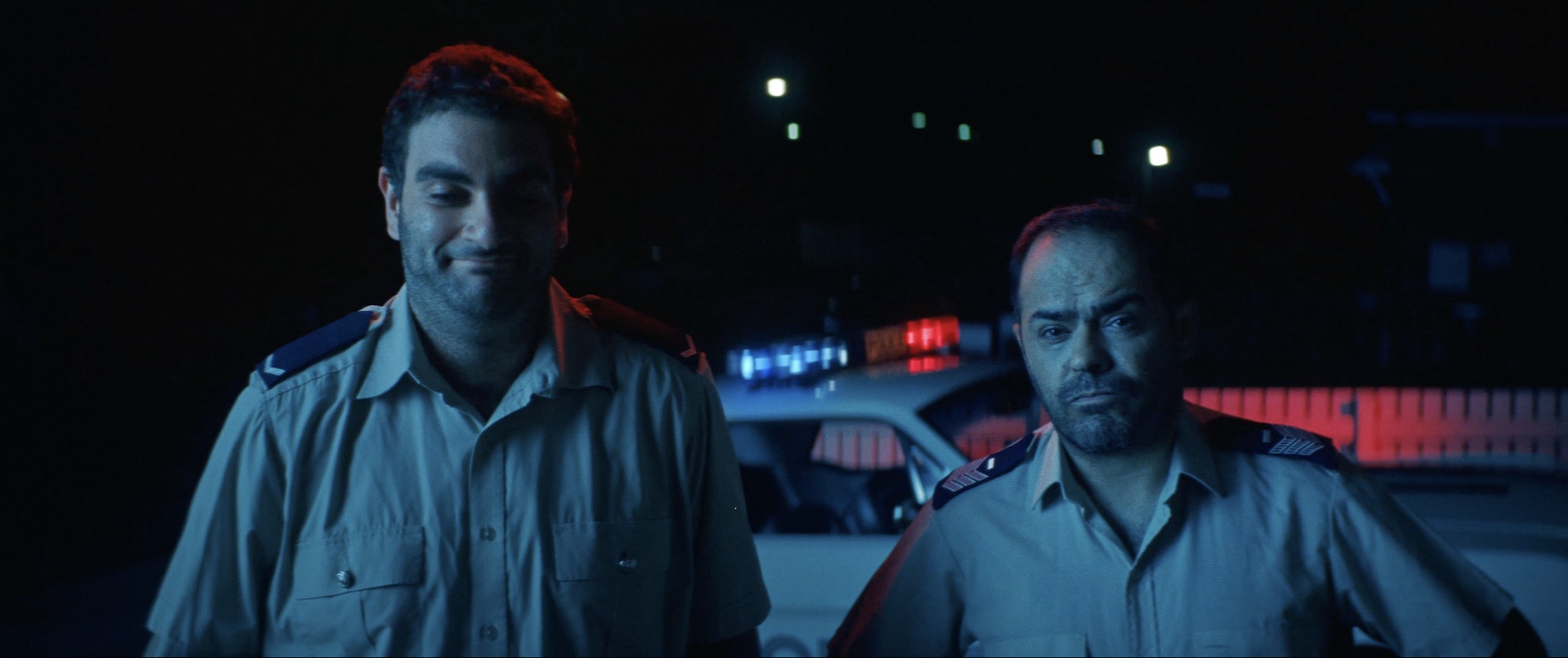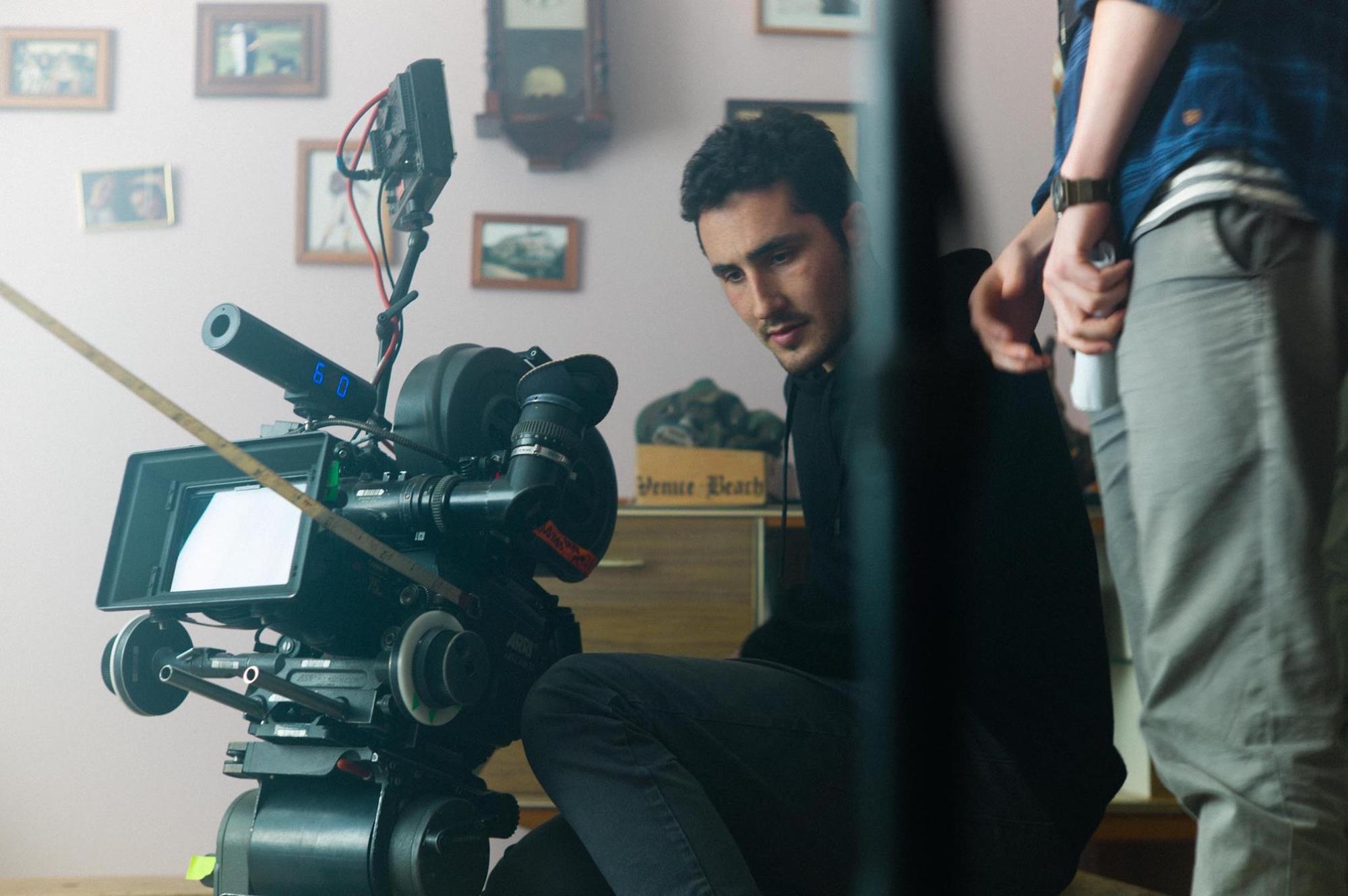
Revenge is a drink best served with a dash of the macabre in M.P. Wills’ genre-bending short Blood Orange. A technicolour fairytale telling the story of two old friends catching up over a glass of orange juice, its twists and turns, as well as a taste for the grotesque, beguile and shock in equal measure. We called up the Australian director to discuss the inspiration behind the tale, the anxieties of shooting on film, and the power of narration.
How did you come up with this unique idea?
It started as more of a feeling than a constructed idea. I’ve always been fascinated by blending genres, blending darkness and beauty with a bit of comedy. I wanted to throw these different elements into a kind of cocktail shaker, shake them up a little bit and see what comes out.
I think there’s a very marked contrast between the ugliness of the character’s actions and the aesthetically pleasing way the movie is shot. Was it fun to tease out these contradictions?
I learned a lot through watching stuff like Korean Cinema growing up. It puts you in this weird space where your eyes are at odds with your head. It’s almost like seeing a J.M.W. Turner painting that’s really beautiful, but of a butcher cutting meat. This really odd contrast is something I’ve been interested in exploring. I suppose this film is the first step down this pathway.

The main takeaway I had from Blood Orange and its brilliant twist is: “Underestimate people at your own peril”.
I didn’t really think in terms of character, but I did go through my fair share of bullying and this is in some ways about underestimation, bullying and what happens if you let things in the past fester, then grow into a monster. But I think as a whole I don’t see myself as a character-driven director. I like building worlds and using visuals to carry the story along; creating a warped, brooding atmosphere that these characters exist in.
We had all these 35mm rolls sitting in the house for about six months — which was a kinda anxious wait!
What was it like shooting this world on 35mm?
I’ve wanted to shoot on film for a long time but to be honest we never really had the funds for it. But aesthetic is really important for me. I can’t shoot a film unless it looks good. Shooting on 35mm for the first time was a little scary, but we had some really talented people on board, especially the cinematographer. We definitely maxed out a lot of credit cards. It went a little bit over budget, then after the film was made we had to wait six months to get it developed and scanned because we didn’t have enough money. We had all these 35mm rolls sitting in the house for about six months — which was a kinda anxious wait!

The 35mm film really helps to stress the striking colours of the movie. What was the idea behind these contrasts?
I think that colours play a really important part. We wanted the setting to pop out like candy. When it’s daytime there are a lot of blues and candy-ish colours, but when it’s nighttime it’s a little greyer. I had a lot of extensive talks with the production designer to make sure that we followed a kind of colour palette that matches an off-90s sort of feel. I think when you have these kinds of colours on film, it really brings out the contrast in saturation and pops out a lot more. When you want to have a lot of world-building, it’s really important to have your cinematographer and production designer as your best friends in this scenario.
We had Rodney Mullinar as the voice actor — he’s a living legend in Australia.
The house that Eli (Rahel Romahn) lives in feels as if he inherited it from his mother, with lots of interesting pictures on the walls. How did you create that set?
The room looked a lot different to how we had it. We had to rearrange and set decorate the entire thing. All the photos and furniture were bought by the production designer. Everything needed to look like it came from the 90s. It was definitely a lot of work for the production designer in that one.
I loved the narration in the movie, which really adds this extra storytelling layer. Did you always intend to use this narration in the movie?
In the first cut we had a lot more narration! It’s a way for the film to be a little more of a fairytale. It gives a God-presence, an outside perspective that accentuates certain moments. We had Rodney Mullinar as the voice actor — he’s a living legend in Australia and his voice has been used in just about every commercial you hear on the radio. It was definitely good to work with him.




Following up on this use of outside perspective, the sound design helps to gesture towards this bigger world. How did you work on it?
For the sound design we worked with a studio in Wellington. That was a really good collaboration actually. We expressed at the beginning that sound design was going to be a really important thing. We really wanted to be inside this character’s head as his blindness is a massive factor in the film. As we’re seeing the film’s through Eli’s perspective, and as Eli is blind, the sound should play a much bigger role. There were a lot of interesting things the sound designer came up with. For example, with the dog squealing, it was actually a pig squealing. I think he blunted the sound a little bit.
We take them on a lyrical journey that subverts expectations, changes the mood of the film and creates a really strange sort of feeling.

Music also plays a strong role. I liked the simple, yet very expressive piano line at the end. Did you always have this song in mind?
I had a piano track in mind that I wanted to use when I first started writing this. I actually came up with this end-scene by listening to this track. I would play this track in my head and the visuals would come into play. We had a certain track in mind — Mariage d’Amour by Paul de Senneville, but we couldn’t get our hands on that due to licensing issues. So we decided to go with something similar in vein, perhaps less emotive but a little darker. I think that during that final scene music is influential in a sensorial way, to help the film do a 360-degree backflip. We take them on a lyrical journey that subverts expectations, changes the mood of the film and creates a really strange sort of feeling.
Next up is a horror feature… How To Find It?
That’s something that’s happening slowly. Right now, we have a bit of funding but that’s something we’re looking to revisit. I’m going to work on another short film in 16mm, but we’re going to wait until this corona thing calms down a little bit. The feature film should follow in the months after that.


